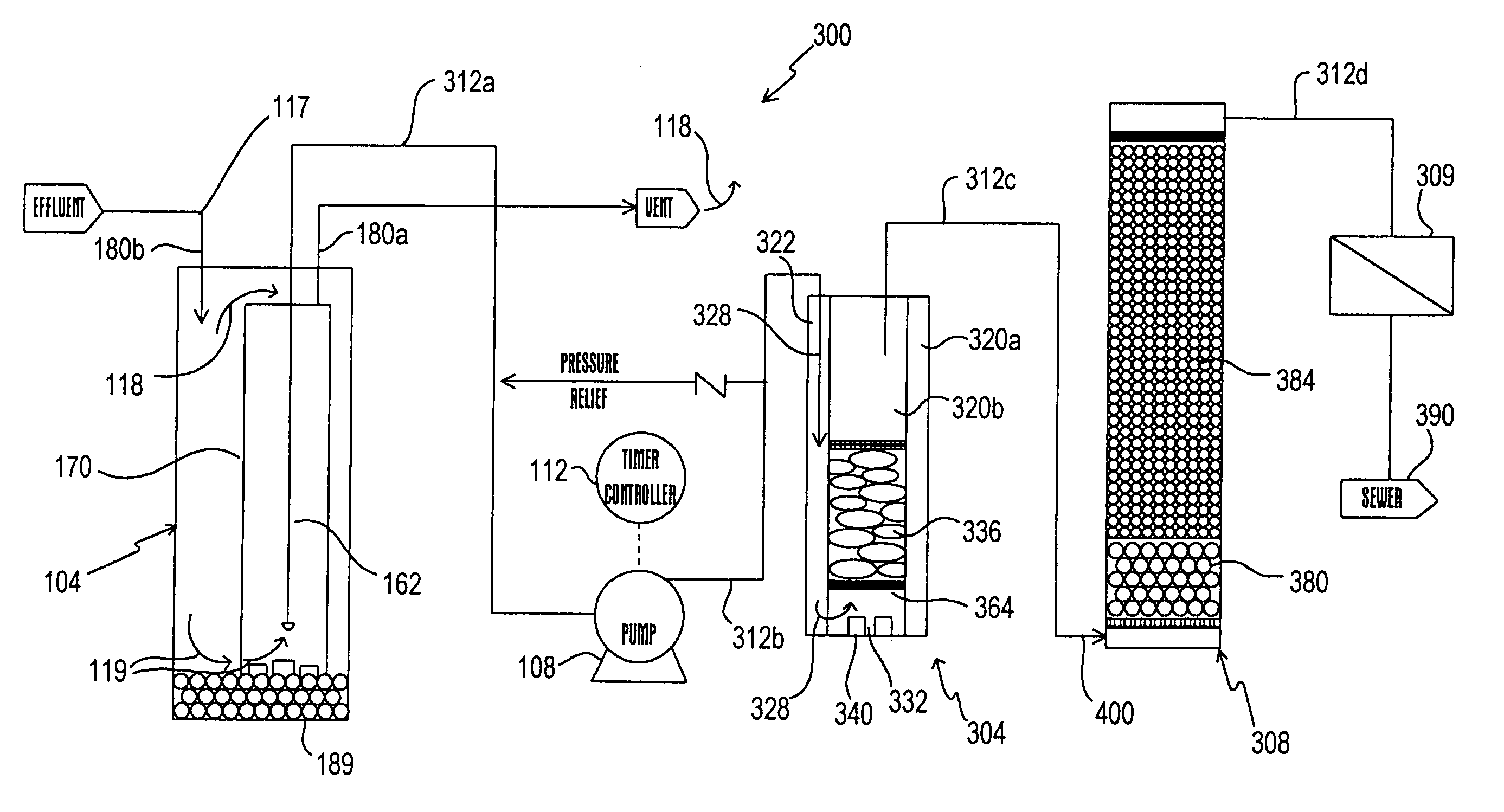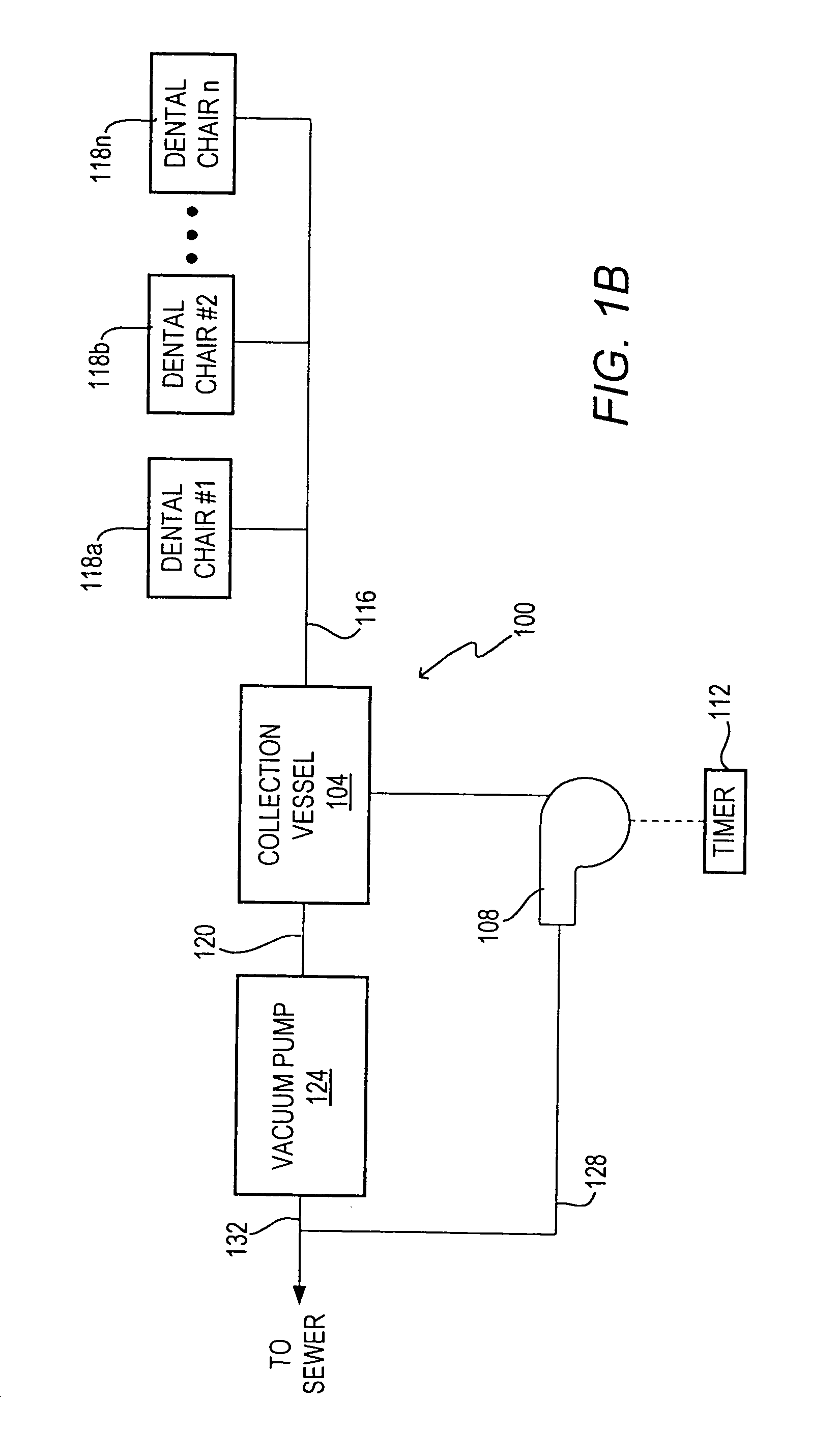Apparatus and method for removing mercury and mercuric compounds from dental effluents
a technology of dental effluent and mercuric compounds, which is applied in the direction of liquid degasification, multi-stage water/sewage treatment, separation processes, etc., can solve the problems of inability to remove dissolved mercury and mercury-containing compounds, in violation of applicable environmental regulations, and high toxic discharged form of mercury
- Summary
- Abstract
- Description
- Claims
- Application Information
AI Technical Summary
Benefits of technology
Problems solved by technology
Method used
Image
Examples
Embodiment Construction
The Particulate Collection System
[0044]A first embodiment of the present invention is depicted in FIGS. 1–5 and 7. The particulate collection system 100 includes a collection vessel 104, a pump 108 (e.g., a peristaltic pump), and a timer 112 (e.g., an electronic 24 / 7 timer). The collection vessel 104 is located between the vacuum line 116 to the chairs 118a–n and the vacuum line 120 to the vacuum pump 124. Thus, the vessel 104 is typically installed on the suction side of the vacuum pump 124, preferably close to the vacuum pump. A liquid discharge line 128 is connected to the pump 108 and from the pump 108 to the exhaust hose 132 from the vacuum pump 124 to the sewer (not shown).
[0045]The timer 112 is connected to the pump 108 to cause discontinuous discharge of the liquid waste (or liquid phase) from the collection vessel 104. The timer 108 ensures that there is a sufficient (predetermined) settling time (in which the liquids and solid phases are relatively quiescent) prior to acti...
PUM
| Property | Measurement | Unit |
|---|---|---|
| oxidation-reduction potential | aaaaa | aaaaa |
| pH | aaaaa | aaaaa |
| pH | aaaaa | aaaaa |
Abstract
Description
Claims
Application Information
 Login to View More
Login to View More - R&D
- Intellectual Property
- Life Sciences
- Materials
- Tech Scout
- Unparalleled Data Quality
- Higher Quality Content
- 60% Fewer Hallucinations
Browse by: Latest US Patents, China's latest patents, Technical Efficacy Thesaurus, Application Domain, Technology Topic, Popular Technical Reports.
© 2025 PatSnap. All rights reserved.Legal|Privacy policy|Modern Slavery Act Transparency Statement|Sitemap|About US| Contact US: help@patsnap.com



